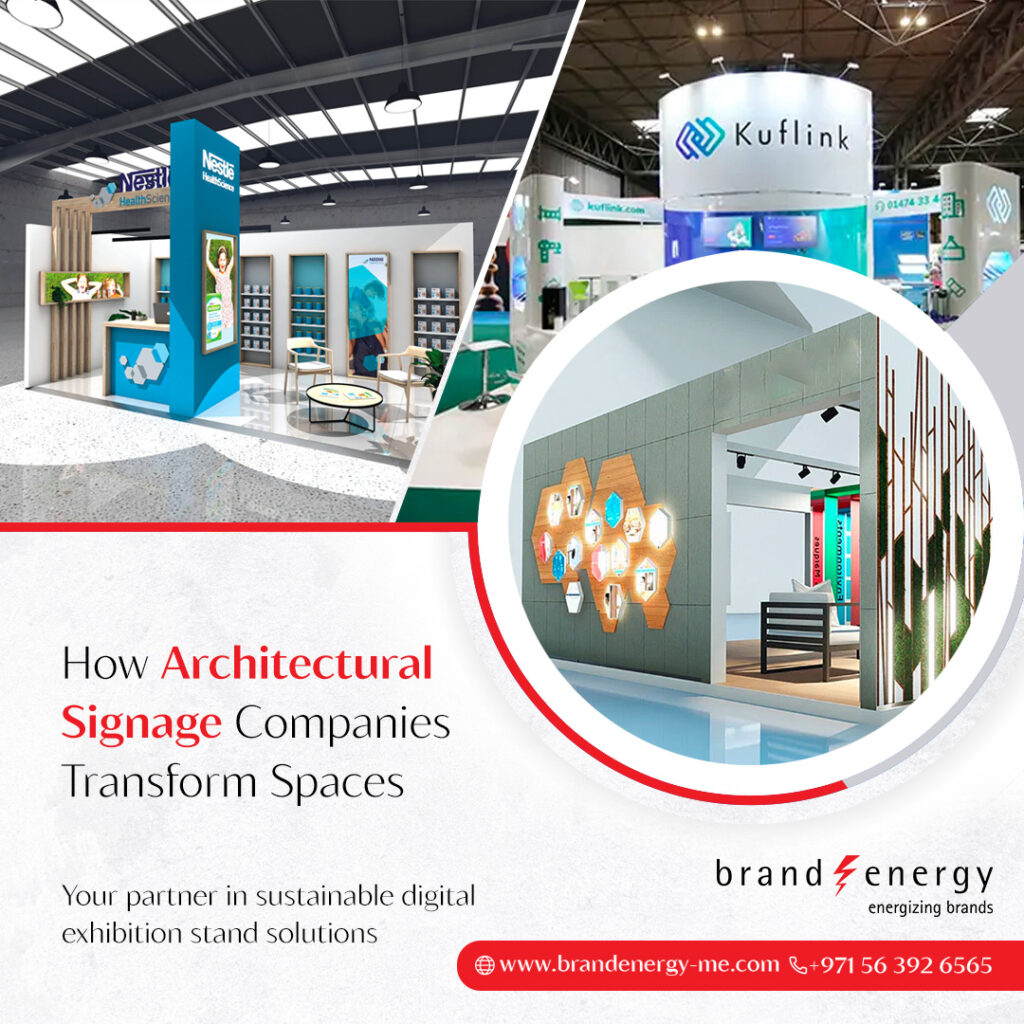Architectural signage is an artistic expression that influences how we perceive spaces, not just a useful navigating aid. In architectural signage design, signage businesses are essential to turning spaces into places that are visually beautiful, easy to navigate, and serve a purpose. Let’s examine the manner in which these businesses support the transformation of spaces.

1. Creating a Visual Identity
A space’s architectural signage frequently serves as people’s initial point of contact. To develop a visual identity that captures the spirit of a location, signage businesses collaborate closely with designers and architects. This identity encompasses the brand, culture, and mission of the place, going beyond simple names and logos. Every site, from retail establishments to corporate headquarters, is distinct, and signage serves as a visual narrator, establishing the mood for the encounter.
2. Enhancing Wayfinding and Accessibility
Expert signage companies meticulously plan the placement of signs to ensure optimal wayfinding. Clear directional signs, floor graphics, and strategically positioned identifiers guide individuals effortlessly. In addition to aiding navigation, signage is integral to creating accessible environments, ensuring that everyone, regardless of physical ability, can comfortably traverse the space.
3. Integrating Art and Architecture
Signage companies collaborate with architects to integrate signage seamlessly into the architecture. The materials, colors, and typography chosen for signs contribute to the overall visual harmony of a space. Signage becomes an art form, enhancing the aesthetic appeal of the environment while serving its practical purpose.
4. Fostering Brand Connectivity
For commercial spaces, architectural signage is a powerful tool for brand reinforcement. The consistency of branding across signage builds brand recognition and fosters a connection with visitors. Whether it’s a logo prominently displayed on a building facade or branded wayfinding elements, architectural signage serves as a constant reminder of the brand, creating a memorable and cohesive brand experience.
5. Adapting to Technological Advances
Modern architectural signage is not confined to static elements. Signage companies leverage technology to create dynamic, interactive, and digital signage solutions. From LED displays that convey real-time information to interactive touchscreens that engage users, technology enhances the versatility and impact of architectural signage, keeping pace with the digital age.
6. Meeting Regulatory Standards
Reputed such companies are well-versed in local and international regulatory standards. They ensure that signage not only meets legal requirements but also complies with accessibility standards. This expertise is crucial in creating inclusive and compliant spaces, particularly in public and commercial environments.
Architectural signage companies are involved in many aspects of space transformation. In addition to their utilitarian role of direction and information, they enhance a location’s visual identity, accessibility, and overall experience. Signage firms develop to meet the challenges of creating inventive, visually appealing, and functional spaces that create a lasting impact on those who occupy them, much as architects and designers continue to push boundaries.

